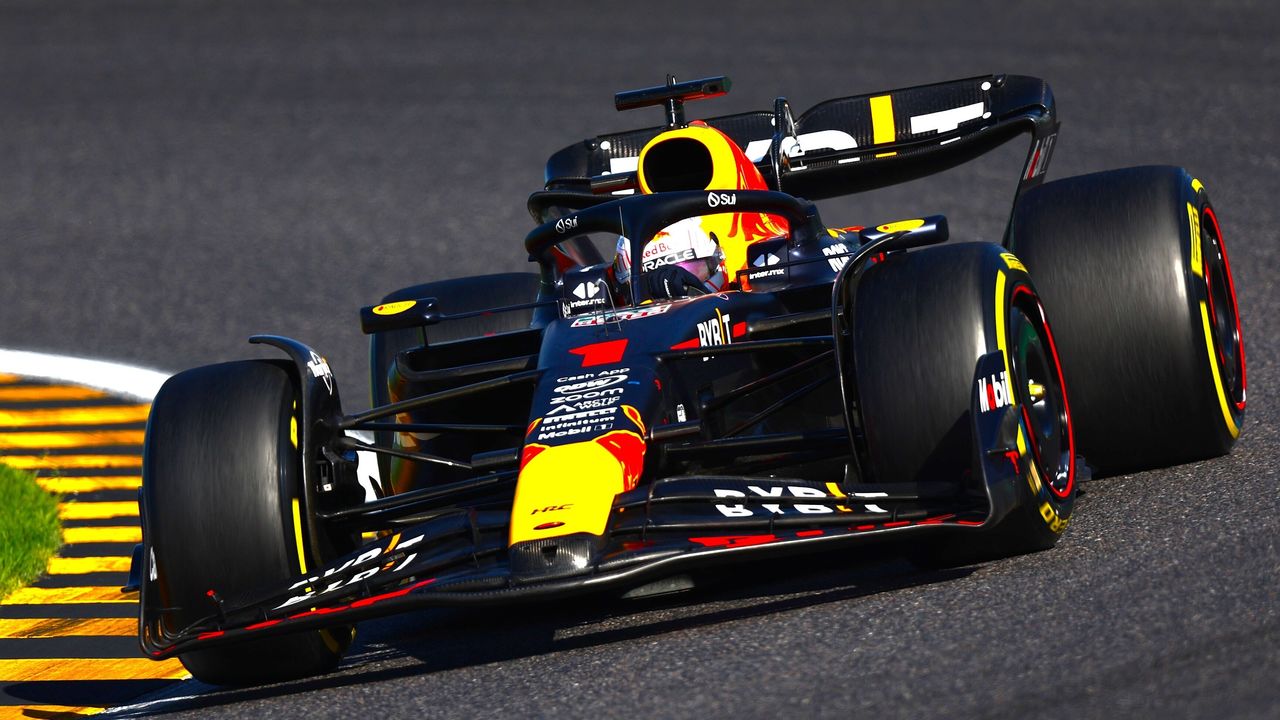NEED TO KNOW: The most important facts, stats and trivia ahead of the 2024 Azerbaijan Grand Prix
Formula 1 heads to Azerbaijan for the start of the final flyaway sequence this weekend. Need to Know is your all-in-one guide for the three days of action ahead with statistics, driving pointers, strategy tips and plenty more. You can also keep track of how fans have voted using our popular F1 Play predictor game.
The action on the streets of Baku will begin with first and second practice on Friday, September 13, followed by final practice and qualifying on Saturday, September 14, and then the main event, the Azerbaijan Grand Prix itself, on Sunday, September 15.
Jolyon Palmer, former Renault F1 driver: A long lap – there’s so much to put together in Baku, with lengthy straights and big braking zones in the first sector, before a winding second sector and a tough third sector.
Braking for Turn 1 is tricky; the corner comes quickly after the start-finish line, but it somehow seems to take such a long time to get there from the final turn. With some slipstream, whether you luck into it or orchestrate it, you can gain a huge amount of time.
That’s something to watch for in qualifying, but out laps are also important; the track surface isn’t so abrasive, so with a slow out lap you could fail to warm up the tyres and lock up into Turn 1.
The notorious castle section in the middle of the track is narrow and a place where accidents can easily happen, but the trickiest corner is probably Turn 15, where you’re accelerating towards the end of the lap.
Turn 15 is an unsighted left-hander in which you’re braking slightly to the right, then you’ve got to slow it down and not get into the run-off area, and avoid the looming walls in the process.
It’s all about the braking and, like at any street circuit, there’s plenty of time to be gained if you can carry sufficient speed out of the apex – just don’t get greedy with the apex and clout the wall.
“As the circuit is normally open to city traffic, track evolution will be an important factor to consider when evaluating performance, while the weather can also play its part,” reads Pirelli’s weekend preview.
“Usually, it is quite hot in September, with temperatures definitely higher than those experienced when the race was held in April. Furthermore, track temperature can vary significantly depending on which parts are in sunlight or in the shade from the surrounding buildings, especially in the section that runs through the old city.
“The wind can [also] upset the car’s handling and, coming from different directions, can catch the drivers unawares, as it is channelled by the surrounding buildings of the town.
“The high speeds reached on the main straight will put the tyres to the test, especially with the downforce generated by the current cars.
“With another section of track requiring the opposite aero set-up, the teams cannot opt to run too low a downforce level as they would then suffer in the slowest part of the track, where they will rely on tyre-generated grip to get the most out of the car.
“When it comes to strategy, Baku is a typical one-stop race with the hardest tyre doing most of the work. In 2023, almost all drivers started the race on the medium before switching to the hard when the Safety Car came out on Lap 11.
“Although a glance at the circuit layout might lead one to believe that overtaking is relatively straightforward, that is not at all the case.
“Given the hierarchy of the teams this year, with the performance differences within the two main groups being minimal, the effectiveness of DRS could play an important role, as will a team’s ability to react to the unexpected on a track where the chances of the race being neutralised are very high.”
After Red Bull’s early-season dominance, we have been treated to thrilling, multi-team scraps at the sharp end for the most part of the 2024 campaign so far, with McLaren, Ferrari and Mercedes all getting themselves in the mix.
If we take the last three races, held at contrasting circuits, different winners emerged from each of them thanks to Lewis Hamilton and Mercedes triumphing in Belgium, a charging run from Lando Norris and McLaren in the Netherlands and Charles Leclerc’s emotional victory on Ferrari’s home turf in Italy.
It’s been a fascinating sequence with some key takeaways: Red Bull appearing to get confused by their RB20; Ferrari rediscovering some form after a failed batch of updates; Mercedes finally making a breakthrough of sorts; and McLaren being the stable front-runner regardless of the track or conditions.
McLaren’s consistently strong pace, mixed with Red Bull’s struggles, means the Woking-based outfit are now genuine contenders for both world titles – just eight points separating the two teams in the constructors’ standings, and 62 splitting Verstappen and Norris in the drivers’ battle.
Incredibly, Verstappen and Red Bull last tasted victory at the Spanish Grand Prix back in June, some seven races ago, meaning the team will have their work cut out to extend a run of three successive wins in Baku, where Leclerc has also claimed the last three pole positions.
Who will hit the ground running and get the job done this weekend? Thanks to F1’s ultra-competitive and unpredictable nature in 2024, there are several clear candidates to answer that question…

